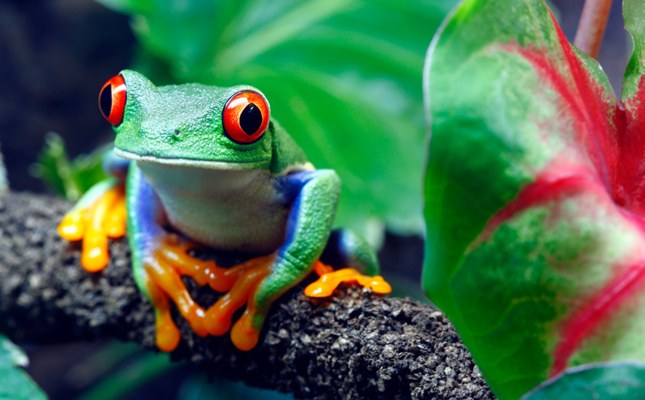[fshow photosetid=72157632959044491]
The problem with the weather’s impact on travels is that it’s inversely proportional to a destination’s enjoyability. Sure, the skies are blue, but with the hoards of likeminded tourists loitering around, one only has a literal split second before a random photo bombs your memory snaps. And OK, so there’s no rain to ruin your excursions, but high season being what it is, the cost of activities are bound to have what I call a “sunshine premium”.
The Green Season
The dry seasons in most tropical places I’ve visited fall during the peak holiday months of December and January. Just as well, because unless you live in a resort town, those months also mean decreased traffic in the cities and a great way to spend your holidays at home. That’s why for me the best time to travel further afield is the summer months around July.
“The wet season?” shriek all the glass-half-empty travellers, while the other half, with credits going to equally optimistic marketing folk, gladly exclaim “oh good, the green season.”
Puffing volcano
So here we are. It’s summertime and we’re in Costa Rica, visiting a childhood friend in La Fortuna, a northern town known for its most famous inhabitant, the Arenal Volcano. The locals tell us she hasn’t been spitting lava for the past few months, but on the day we visited, she was puffing like a chimney. A few hours hike to see the volcano and my thighs were screeching loud enough for me to lament my dormant daily existence, where the furthest I walk is around the block with my dogs.
Taking a hot dip
That afternoon, we oomph-ed and ow-ed around the house. It was raining outside. Or greening if you will. Petrichor, it’s called, the smell of rain. “Want to go for a soak in the hot springs?” asks my friend Ken. It took me a while to register the question. Why of course! Volcano equals geothermal equals hot springs. I guess the tourism board had done a good job brainwashing me with images of beaches and rain forest birds. “It’s outdoors and it’s raining,” continues Ken, but what the hell we decide, if you can’t beat the wet, join it.
“They cap the attendees at 100 and there’s only three time slots per day, so you gotta make reservations” he continues, as he scrolls through his phone contacts list (he’s been there before). E … E … E for Eco Termales, and we’re booked in. It was nearly six, so we rushed out of the door to maximise the 5 p.m. to 9 p.m. window.
Steaming jungle pool
A first timer would never suspect the jungly hot springs tucked behind the nondescript wooden gates at Eco Termales. Strange how rain makes you dash, must be some innate prehistoric tendency to stay dry, but we forced ourselves to slow our steps and enjoy the surroundings. It was nightfall by then, with all the sounds of the rainforest surroundings and the rain splashing on four pools that I could just make out in the rain, connected by pathways and a bridge. We settled in for a deep soak, and when the rain lifted, I noticed the steam rising from the pool, fogging up the carefully placed spotlights around the gardens. It’s not very big. In fact I’d call it cozy, in the best sense of the word. On the evening we were there, there were only two other couples, so it felt like we had the whole mystical place to call our own.
Over the next week or so in and around La Fortuna, we hiked, we clopped around horseback along the lake, and we cooled off in the daytime in a waterfall stream. We even spotted a toucan on the grounds of the butterfly conservatory for that iconic Costa Rican moment. On certain days, when the going got tough, the tough once again got going to a hot spring afterwards. All in all we visited three (of a handful of) hot springs, all with a different appeal:
Baldi Hot Springs
Facilities: 25 pools, 2 restaurants, 3 swamp bars, changing rooms, spa, water slides
Plus: Views of Arenal Volcano
Minus: Young(er) restless crowd gives it a spring break kind of ambiance
Cost: US$60 for a day pass,including lunch & dinner (half price for children aged 1 to 5)
www.baldicostarica.com
Tabacón Thermal Springs
Facilities: Numerous thermal pools, waterfalls, streams, cold pools, swim up bars
Plus: The natural-ness of the lush surroundings
Minus: The cost
Cost: US$95 for a day pass, including lunch & dinner (US$40 for children under 12)
www.tabacon.com
Eco Termales Hot Springs
Facilities: Four pools, waterfall, changing rooms, restaurant
Plus: Intimacy and coziness
Minus: Less facilities, less wow factor
Cost: US$51 for a day pass, including one meal (US$38 for children aged 6-10)
www.ecotermalesfortuna.cr
The thought of geothermal wonders didn’t even cross our minds before we arrived at Costa Rica, but when we discovered them, they just added that extra facet to the kind of holiday one would expect there – filled with white sandy beaches and colourful tropical wildlife. As for the rain, well, at times it got a bit muddy, but the forests were lush and green because of it, as were the rates with tourist levels lower. Would I return during the dry season, all things considered? Nah. I’ll stick with my green season.
Benefits of hot springs
- Soothes the muscles and joints
- Trace minerals are absorbed into the body with healing effects, including stimulation of the immune system and normalisation of endocrine glands.
- Negative ions in the atmosphere promote psychological and physical wellness.
- Moves oxygen-rich blood through the body to nourish organs and tissues.
- Eliminates toxin built up in the body by stimulating sweating.

